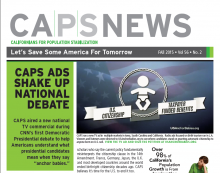Fall 2015 Newsletter
Published on October 23rd, 2015
CAPS Ads Shake Up National Debate
CAPS aired a new national TV commercial during CNN’s first Democratic Presidential debate to help Americans understand what presidential candidates mean when they say “anchor babies.”
Immigration Wave
Often, being wrong is more comforting than being right. For years, Californians for Population Stabilization has said that immigration and births to immigrants account for and will continue to be the primary driver for an overwhelming majority of the nation’s unsustainable population growth.
Accidental Birthright
An American could be forgiven for thinking that the Constitution guarantees citizenship to everyone born on U.S. soil. According to NPR, it is a “right carved in stone.” The International Business Times stated that ending birthright citizenship “would be in direct contradiction to the U.S. Constitution’s 14th Amendment.”
Food Security
CAPS Senior Writing Fellow Leon Kolankiewicz, a consulting environmental scientist and natural resources planner, and CAPS Advisory Board member, recently wrote a paper for the Washington, DC-based group, Negative Population Growth, as part of the long-running NPG Forum series.
Population Growth and Environmental Injustice
Human population growth and overpopulation can be linked to most of the environmental ills the biosphere is currently suffering. However, the media rarely, if ever, connect one important environmental ill—environmental injustice—to population growth and overpopulation.
Legislative Update
Visit CAPSweb.org and click on “Take Action” to let your voice be heard on the issues below and more.
The True Cost of Traffic:$160 Billion
Likely it comes as no surprise to anyone who drives in Southern California that the L.A.-Long Beach-Anaheim area takes the No. 2 spot for worst congestion (behind Washington, D.C.), while the San Francisco Bay Area earned the No. 3 spot. These are the findings for areas with more than 3 million population from a recent report by the Texas A&M Transportation Institute.
Welcome
CAPS welcomes Michael Rivera as a new advisory board member. His family has lived in New Mexico since the 1600s and California for five generations.
Employees Begin to Fight Back Against H-1B Visa Abuses
As awareness increases about how employers have been gaming the visa system—specifically the H-1B visa—to bring in foreign workers to replace U.S. workers, American employees increasingly aren’t putting up with the abuse.
Strip Mining VS. Protecting Biodiversity
The Klamath-Siskiyou ecoregion in the U.S. Northwest is an area of global botanical significance, with 3,500 plant species, of which 280 are rare or endemic.
CAPS Joins Consortium to Build Wildlife Crossing
A year ago in our fall newsletter, we wrote about the Sixth Extinction, the greatest loss of biodiversity since the dinosaurs, and talked about how the global event is impacting California and what can be done to lessen or reverse impacts.
CAPS ADS SHAKE UP NATIONAL DEBATE

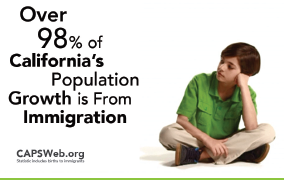 More than 300,000 babies are born in the U.S. to illegal immigrants each year. Under current policy, when a citizen of another country gives birth to a child on U.S. soil, whether here as a tourist or illegally, the baby automatically gets U.S. citizenship along with taxpayer-funded benefits. And once citizenship is obtained, the parents eventually become eligible for U.S. citizenship and benefits too. Then the parents’ extended families can apply for citizenship. The U.S. and Canada are the only two developed nations that still allow birthright citizenship.
More than 300,000 babies are born in the U.S. to illegal immigrants each year. Under current policy, when a citizen of another country gives birth to a child on U.S. soil, whether here as a tourist or illegally, the baby automatically gets U.S. citizenship along with taxpayer-funded benefits. And once citizenship is obtained, the parents eventually become eligible for U.S. citizenship and benefits too. Then the parents’ extended families can apply for citizenship. The U.S. and Canada are the only two developed nations that still allow birthright citizenship.
CAPS asks, “Why should a citizen of another country who has broken our laws be rewarded with U.S. citizenship and taxpayer benefits for them, their children and their extended family? That’s not fair to those who are following the rules to immigrate here the right way. And it’s not fair to the American taxpayer either.”
Several Presidential candidates have called for ending birthright citizenship, citing constitutional scholars who say the current policy fundamentally misinterprets the citizenship clause in the 14th Amendment. France, Germany, Japan, the U.K. and most developed countries around the world ended birthright citizenship decades ago. CAPS believes it’s time for the U.S. to end it too.
Earlier in the year, sparked by California’s historic drought, CAPS ran a TV ad in the Los Angeles and Sacramento markets linking California’s declining environment to immigration driven population growth.
The ad featured a child asking, “If Californians are having fewer children, why are there so many cars? If Californians are having fewer children, why isn’t there enough water? If Californians are having fewer children, where are all the people coming from?”
CAPS made the point that nearly 100 percent of California’s growth over a ten-year period came from immigration and births to immigrants and that more people means more cars and trucks.
Our primary solution to reversing California’s environmental decline, while not politically correct or convenient, is to slow mass immigration, so we can slow population growth and save some California for tomorrow for our children and grandchildren. As a result of this ad, CAPS received more TV, radio and print media attention than ever before in its history.

Coverage continued for the entire month of June and included FOX, ABC, NBC, U.S. News & World Report, Los Angeles Times, Sacramento Bee and The Washington Times, to name a few.
After the ad ran, Governor Brown started to worry about overpopulation (see Tweet above).
IMMIGRATION WAVE
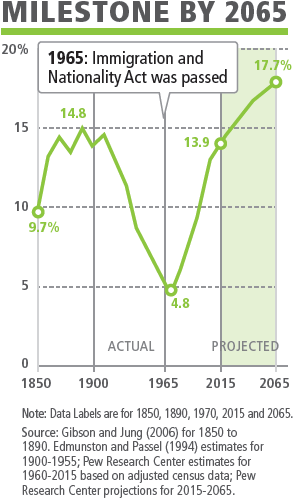 Often, being wrong is more comforting than being right. For years, Californians for Population Stabilization has said that immigration and births to immigrants account for and will continue to be the primary driver for an overwhelming majority of the nation’s unsustainable population growth.
Often, being wrong is more comforting than being right. For years, Californians for Population Stabilization has said that immigration and births to immigrants account for and will continue to be the primary driver for an overwhelming majority of the nation’s unsustainable population growth.
Unfortunately, CAPS has been right. A new Pew Research Center report found that during the next five decades, immigration will fuel 88 percent of the U.S. population increase.
Pew demographer Jeff Passel said, “Without the immigrants, the U.S. population would start decreasing.” Passel added that “the big picture is that immigration has been the major demographic factor driving growth and change in the U.S. population over the last 50 years.”
By 2065, the U.S. will be home to 78 million immigrants, and a record 18 percent of all persons will be foreign-born, Pew projected. Since the 1965 Immigration and Nationality Act, the nation’s foreign-born share has risen to 14 percent of today’s total. In 1965, only 9.6 million
were foreign-born.
ACCIDENTAL BIRTHRIGHT
An American could be forgiven for thinking that the Constitution guarantees citizenship to everyone born on U.S. soil. According to NPR, it is a “right carved in stone.” The International Business Times stated that ending birthright citizenship “would be in direct contradiction to the U.S. Constitution’s 14th Amendment.”
Here is what one should know in the debate about (accidental) birthright citizenship: the Supreme Court has never ruled that the 14th Amendment of the Constitution—passed to ensure that former slaves were considered U.S. citizens—grants citizenship to the American-born children of illegal aliens, foreign students, tourists or temporary foreign workers in the United States.
Yale professors Peter Schuck and Rodgers Smith wrote an entire book on the subject—Citizenship Without Consent: the Illegal Alien in the American Polity—which concluded that it did not. In Oforji v. Ashcroft, 7th Circuit Judge Richard Posner, named by The Journal of Legal Studies as the most cited legal scholar of all time, wrote, “A constitutional amendment may be required to change the rule whereby birth in this country automatically confers U.S. citizenship, but I doubt it…. Congress would not be flouting the Constitution if it amended the Immigration and Nationality Act to put an end to the nonsense.”
America does not need a debate about whether the Constitution mandates accidental birthright citizenship. We need a debate about whether it is an appropriate policy today. If five justices on the Supreme Court say that its elimination passes constitutional muster, then the law goes into effect.
Interestingly, Americans who love all things European suddenly do not. It is not just that Europe does not have birthright citizenship; it did have it, reviewed it, decided it was a bad idea, and removed it. The UK and France, among others,
jettisoned automatic birthright citizenship. It was part of Ireland’s Constitution until 80 percent of the voters removed it in a referendum.
But the United States is different because it is an immigrant nation goes the cliché. The U.S. is no more an immigrant nation than New Zealand or Australia. They both abolished birthright citizenship in the last decade. Canada is the only other industrialized nation to grant citizenship to each person born in the country, regardless of the parents’ nationality or immigration status.
There may have been good policy arguments for jus soli, the right of the soil, in 1868, but these no longer apply in 2015 when an airline flight makes birth tourism accessible and simple. Legislation in Congress would clarify that citizenship at birth is granted only if at least one of the parents is a citizen, permanent lawful resident or noncitizen serving in the armed forces. It is time to end accidental birthright citizenship.
FOOD SECURITY
CAPS Senior Writing Fellow Leon Kolankiewicz, a consulting environmental scientist and natural resources planner, and CAPS Advisory Board member, recently wrote a paper for the Washington, DC-based group, Negative Population Growth, as part of the long-running NPG Forum series.
Entitled “The Other Soil Erosion: Long-Term Erosion of Our Productive Farmland Base from U.S. Population Growth,” this paper examines the threat posed by unsustainable, immigration-fueled U.S. population growth to America’s long-term food security.
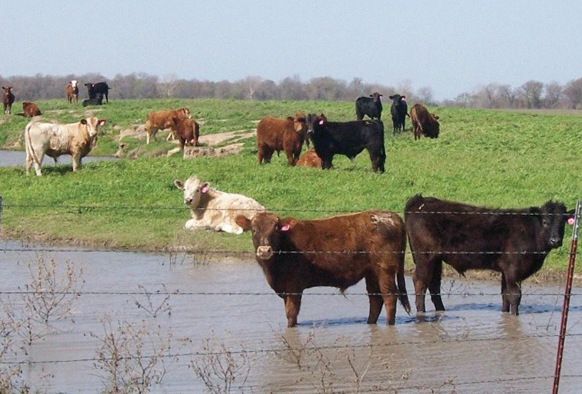 The paper scrutinizes three unsustainable trends that, unless altered, are likely to severely compromise America’s ability to grow enough food to feed itself and export to an ever-hungrier world:
The paper scrutinizes three unsustainable trends that, unless altered, are likely to severely compromise America’s ability to grow enough food to feed itself and export to an ever-hungrier world:
- Increasing developed land
- Decreasing farmland
- Ongoing population growth with no end in sight
The paper then discusses the “neglected culprit,” which is U.S. population growth that contributes to sprawl and farmland loss. While both anti-sprawl (a.k.a. “smart growth”) and farmland preservation advocates have been reluctant to recognize it, in fact, population growth is the principal factor behind sprawl and farmland loss.
Kolankiewicz’s NPG Forum paper concludes: “More mouths to feed means less land to feed them on.” Even as the number of mouths to feed in America has soared to 322 million, and continues swelling by 2 to 3 million every year, the very land and water resources needed to feed these human masses—and the growing population of a world that has grown dangerously dependent on America’s agricultural largesse—are inexorably shrinking.
“Part of the reason that growth is unsustainable is because it is devouring the land it needs to feed itself, sawing off the limb it stands on,” writes Kolankiewicz. “Eventually that limb will snap. But we’re smarter than that—one hopes.”
Visit FeedTheFuture.gov and ask why the word overpopulation does NOT appear on its website!
POPULATION GROWTH AND ENVIRONMENTAL INJUSTICE
Human population growth and overpopulation can be linked to most of the environmental ills the biosphere is currently suffering. However, the media rarely, if ever, connect one important environmental ill—environmental injustice—to population growth and overpopulation.
 Environmental justice is the concept that no group of people—for example, poor people or people of color—should be disproportionately subjected to environmental insults compared to other groups or compared to the population as a whole. To illustrate further, polluting power plants or chemical facilities should not be situated in areas inhabited by poor people any more than such facilities are sited in areas where the well-to-do reside. Given that the well-to-do usually have more political influence than the poor, it is easy to imagine that such an imbalance could and does occur.
Environmental justice is the concept that no group of people—for example, poor people or people of color—should be disproportionately subjected to environmental insults compared to other groups or compared to the population as a whole. To illustrate further, polluting power plants or chemical facilities should not be situated in areas inhabited by poor people any more than such facilities are sited in areas where the well-to-do reside. Given that the well-to-do usually have more political influence than the poor, it is easy to imagine that such an imbalance could and does occur.
For many years it never occurred to me that there could be, and indeed is, a direct connection between environmental injustice and population growth in urban areas. This lack of awareness changed a year ago when I attended a UCLA urban planning class led by two guest speakers who are involved with environmental justice issues in Los Angeles; their government jobs are to plan siting for new affordable housing meant to accommodate new city residents of limited financial means.
Compared to other major U.S. cities, Los Angeles contains very little open space. For example, we have among the lowest amount of parkland per capita. Therefore, identification of sites for new affordable housing is not an easy task.
Recent sites chosen by city planners are often located close to freeways. Studies of air pollution in an urban area such as Los Angeles reveal, unsurprisingly, that to live within many hundreds of yards of a freeway is quite unhealthful, especially for the young and the elderly. Yet if the choice is between not building affordable housing or placing it near freeways, then city planners will do the latter. This was explicitly stated by the two guest speakers during the question and answer session that followed their presentation to the class.
Thus, population growth in Los Angeles is a clear driving force for environmental injustice in the city. That is, poor people who move to L.A. and who require affordable housing are preferentially placed into unhealthful living environments.
During the Q&A period, I asked the two planners and indeed everyone in the room (about 50 persons composed mostly of urban planning students and faculty): how much has the population of Los Angeles grown in recent years? To my surprise, not a single person in the room knew—and these are members of UCLA’s highly regarded school of urban planning!
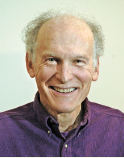 Since I did not know either, I later checked and discovered that L.A.’s population has grown by about 1 million persons in the past 40 years. This huge growth has resulted in the highest population density (people per square mile) of any U.S. urban area, according to the U.S. Census Bureau’s definition of an urban area. No wonder clean sites are no longer available for new affordable housing.
Since I did not know either, I later checked and discovered that L.A.’s population has grown by about 1 million persons in the past 40 years. This huge growth has resulted in the highest population density (people per square mile) of any U.S. urban area, according to the U.S. Census Bureau’s definition of an urban area. No wonder clean sites are no longer available for new affordable housing.
As an environmental aside, if and when people switch to driving electric or other zero-emission vehicles in preference to those that burn gasoline, then our freeways will no longer be principal sources of air pollution and residing in their vicinity will no longer be such a health hazard. Regardless, living next to a freeway is not an ideal location to live or raise a family.
By Ben Zuckerman CAPS Vice President, Board of Directors
LEGISLATIVE UPDATE
WASHINGTON
Amnesty lawsuit The political stalemate in DC continues to block any movement on immigration legislation. Efforts to bar funds for Obama’s administrative amnesties failed to reach the necessary 60-vote threshold in the Senate. In the meantime, a temporary injunction imposed by a federal judge on Obama’s November expansion of the DACA amnesty remains in effect. The Fifth Circuit Court of Appeals denied the administration’s appeal to overturn the injunction. Thank you for contacting your legislators regarding your support of the injunction!
Sanctuary cities The murders of Kate Steinle and Marilyn Pharis allegedly by illegal aliens with long criminal records brought home the tragedy of failing to enforce our immigration laws. The national outrage led to considerable rhetoric about sanctuary cities and the introduction of several bills, but little substantive action. The House passed HR 3009, which would block the small SCAAP funding reimbursements to jurisdictions that did not comply with ICE detainer requests, but has not acted on any of the more significant legislation such as S 1842/HR 3347 and HR 3011.
Sign CAPS petition to stop sanctuary cities at www.sanctuary.instapage.com.
Syrian refugees The Obama administration has announced plans to accept more refugees from Syria, and some immigration enthusiasts have called for the U.S. to accept 100,000 per year. Fortunately, there are also some saner voices in Washington. HR 3314 would stop any increase in the numbers until Congress evaluates the ramifications.
SACRAMENTO
California continued its efforts to blur the distinction between legal and illegal residents. The legislature passed SB 4 to extend Medi-Cal to minors in the state who are here illegally, but it was stripped of a major provision, language seeking a federal waiver to include all illegal aliens in Covered California. Thanks to those Californians who fought to remove this provision from the bill!
The legislature also passed AB 622 to deter employers from using E-Verify by fining them $10,000 for each time they “misuse” it. A state version of “Kate’s Law,” which would have required law enforcement agencies to notify ICE of the pending release of illegal aliens who have felony convictions, went nowhere. CAPS’ Board and Advisory Board members and local activists have actively been working on this issue:
- CAPS activists attended a rally and spoke at a recent Santa Barbara County Board of Supervisors meeting on this issue following the rape and murder of Marilyn Pharis, purportedly by an illegal alien.
- In addition, hundreds of CAPS Santa Barbara County activists participated in a patch-through phone campaign to urge the Board of Supervisors to cooperate with ICE.
- Recently jails in Los Angeles agreed to cooperate once again with ICE. Your efforts are taking hold, keep the pressure up!
THE TRUE COST OF TRAFFIC: $160 BILLION
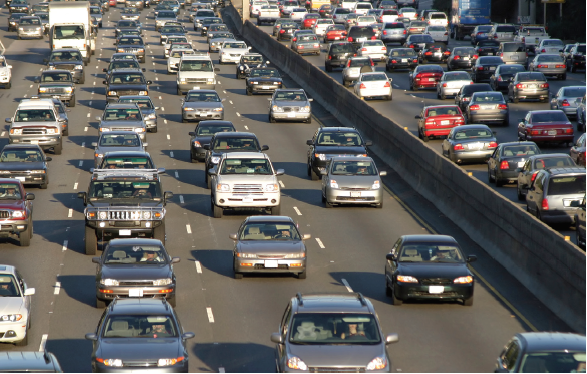 Likely it comes as no surprise to anyone who drives in Southern California that the L.A.-Long Beach-Anaheim area takes the No. 2 spot for worst congestion (behind Washington, D.C.), while the San Francisco Bay Area earned the No. 3 spot. These are the findings for areas with more than 3 million population from a recent report by the Texas A&M Transportation Institute.
Likely it comes as no surprise to anyone who drives in Southern California that the L.A.-Long Beach-Anaheim area takes the No. 2 spot for worst congestion (behind Washington, D.C.), while the San Francisco Bay Area earned the No. 3 spot. These are the findings for areas with more than 3 million population from a recent report by the Texas A&M Transportation Institute.For L.A. drivers, this means 80 extra hours in their cars each year due to traffic delays; 78 for San Francisco drivers, according to the Texas A&M “2015 Urban Mobility Scorecard,” which analyzed 2014 road conditions.
From 2013 to 2014, 95 of the country’s largest metro areas experienced increased traffic congestion. Nationally, congestion delays average 42 hours a year per person, up from 18 hours in 1982. The extra hours on the road and additional fuel (3.1 billion gallons) mean the total annual cost of congestion is a staggering $160 billion, up from $42 billion in 1982.
To address the situation, the authors of the study recommend a “mix of strategies,” including adding capacity, encouraging living closer to jobs and travel/work schedules that achieve the “best bang for the buck.”
Not surprisingly, the report fails to note that—short of Herculean efforts—with unending population growth our transportation system probably will continue to be behind the curve. U.S. population in 1982 was 233 million; today it’s 322 million, and growing. Looking at how the costs in extra hours on the road and fuel have ramped up over 33 years, it’s clear that there is a high cost of growth.
Urge Texas A&M’s Transportation Institute to add population stabilization to the mix of solutions! mobility.tamu.edu/ums/
WELCOME

CAPS welcomes Michael Rivera as a new advisory board member. His family has lived in New Mexico since the 1600s and California for five generations.
Rivera has a long-time commitment to addressing the impacts of illegal immigration and has advocated the use of E-Verify by local municipalities and governments.
Rivera has served on numerous boards and commissions in Central California, including Santa Maria Recreation and Parks (commissioner and chairman of the board) and the County of Santa Barbara Private Industry Council (commissioner, chairman and CFO). As well, he has served with the City of Guadalupe (planning commissioner) and on various committees, including the Mayors Housing Task Force.
Read about Rivera’s experience with illegal immigration in Central California at the CAPS blog, found on the homepage at CAPSweb.org
EMPLOYEES BEGIN TO FIGHT BACK AGAINST H-1B VISA ABUSE
As awareness increases about how employers have been gaming the visa system—specifically the H-1B visa—to bring in foreign workers to replace U.S. workers, American employees increasingly aren’t putting up with the abuse.
The H-1B visa—capped at 65,000 annually—was created “to employ foreign workers in specialty occupations that require the theoreticalor practical application of a body of highly specialized knowledge, including but not limited to: scientists, engineers, or computer programmers,” according to U.S. Citizenship and Immigration Services.
 Definition notwithstanding, employers have been using the visa as a way of replacing American workers with foreign workers who do not have “highly specialized knowledge.” Adding insult to injury, as a term of their severance, the displaced workers are required to train their replacements.
Definition notwithstanding, employers have been using the visa as a way of replacing American workers with foreign workers who do not have “highly specialized knowledge.” Adding insult to injury, as a term of their severance, the displaced workers are required to train their replacements.
Computerworld reports that several Disney workers replaced by H-1Bs are looking at federal and state discrimination complaints over their layoffs, while there are continuing court cases alleging discrimination against India’s two largest IT service firms, Infosys and Tata Consultancy Services, which provide a substantial number of workers to the U.S. through the H-1B visa program.
At the heart of the complaints is that employees were layed off because they were American citizens.
CAPS has been sounding the alarm about H-1B visa abuse for several years. The H-1B is just one of the many ways the unscrupulous take advantage of our immigration system at the expense of American citizens. We stand with those fighting visa abuses in the U.S. immigration system!
The Klamath-Siskiyou ecoregion in the U.S. Northwest is an area of global botanical significance, with 3,500 plant species, of which 280 are rare or endemic. Its streams, originating in the Klamath and Siskiyou mountains, are among the continent’s most productive and are the spawning grounds for wild Pacific salmon and steelhead, writes conservation writer Jim Yuskavitch in his September article for Earth Island Journal.
Yuskavitch notes that the region has the most designated “Wild and Scenic Rivers” in the country and a dozen wilderness areas, along with the Cascade-Siskiyou National Monument (62,000 acres) and the largest unprotected forest on the West Coast, outside of Alaska. Even with protections in some parts, gold mining, livestock grazing, logging and road building have taken their toll on the special place. And now, the area—a proposed UNESCO World Heritage Site and Biosphere Reserve—is under threat from three proposals to strip mine the place for nickel.
Conservationists are opposing the proposals for their negative environmental impacts, including on water supply and air quality, bringing surface pollution, road construction and other activities from mining operations. But, water is among the top concerns, as the Klamath-Siskiyou ecoregion has some of the “cleanest water in the West,” according to local activists.
What’s happening at the Northern California-Southern Oregon border exemplifies what’s happening in areas all around the world, as relentless population growth feeds more consumption and more demand for commodities.
CAPS JOINS CONSORTIUM TO BUILD WILDLIFE CROSSING
 A year ago in our fall newsletter, we wrote about the Sixth Extinction, the greatest loss of biodiversity since the dinosaurs, and talked about how the global event is impacting California and what can be done to lessen or reverse impacts.
A year ago in our fall newsletter, we wrote about the Sixth Extinction, the greatest loss of biodiversity since the dinosaurs, and talked about how the global event is impacting California and what can be done to lessen or reverse impacts.
One project to help in Southern California is the construction of a wildlife overpass at the 101 Freeway to help animals move more freely and protect genetic integrity of populations. As it is now, animals, including mountain lions, bobcats, gray foxes and mule deer, are cut off in part of the Santa Monica Mountains by the 101 and 405 freeways. If you can’t imagine trying to walk across some of the busiest freeways in the country, think what challenges a big cat faces!
Without a large enough habitat, the big cats in this area likely will die out. It’s happened elsewhere; cougars no longer are found on the East Coast, where once they were prolific.
The Mountains Recreation and Conservation Authority recently released a study by California’s transit authority showing that the proposed overpass is feasible. With successful fundraising efforts—it’s a high-dollar project—the crossing could be completed by 2020. That’s good news for the wildlife of the Santa Monica Mountains!
More information: savelacougars.org.
 |
 |


